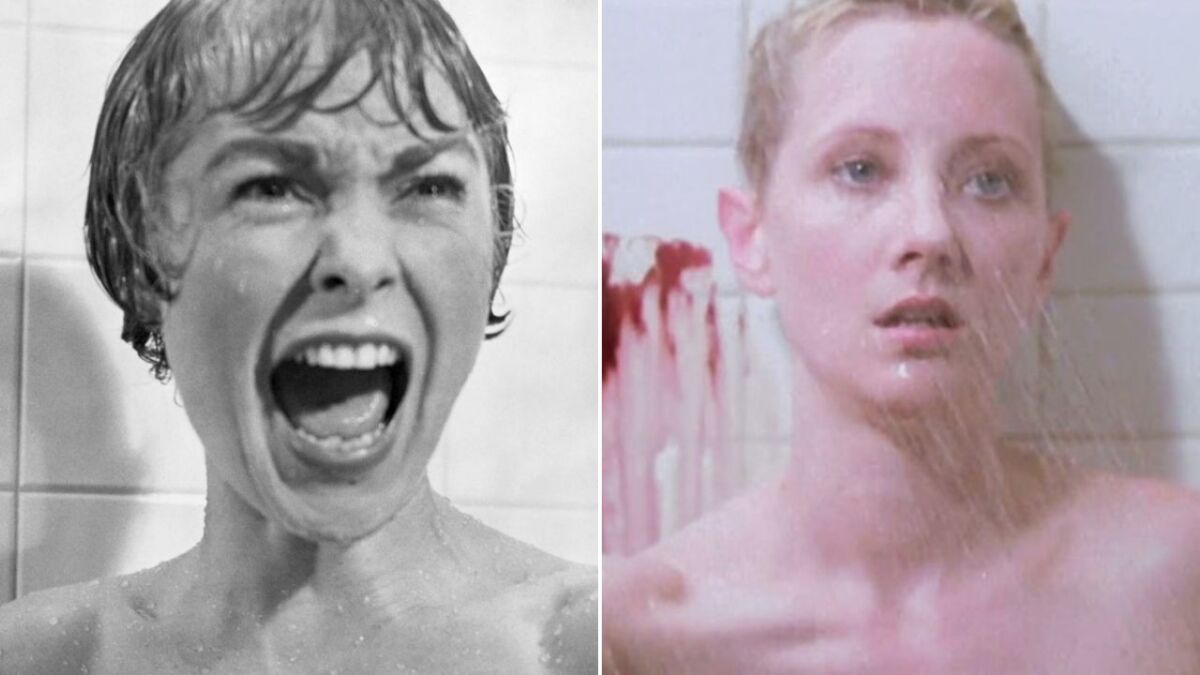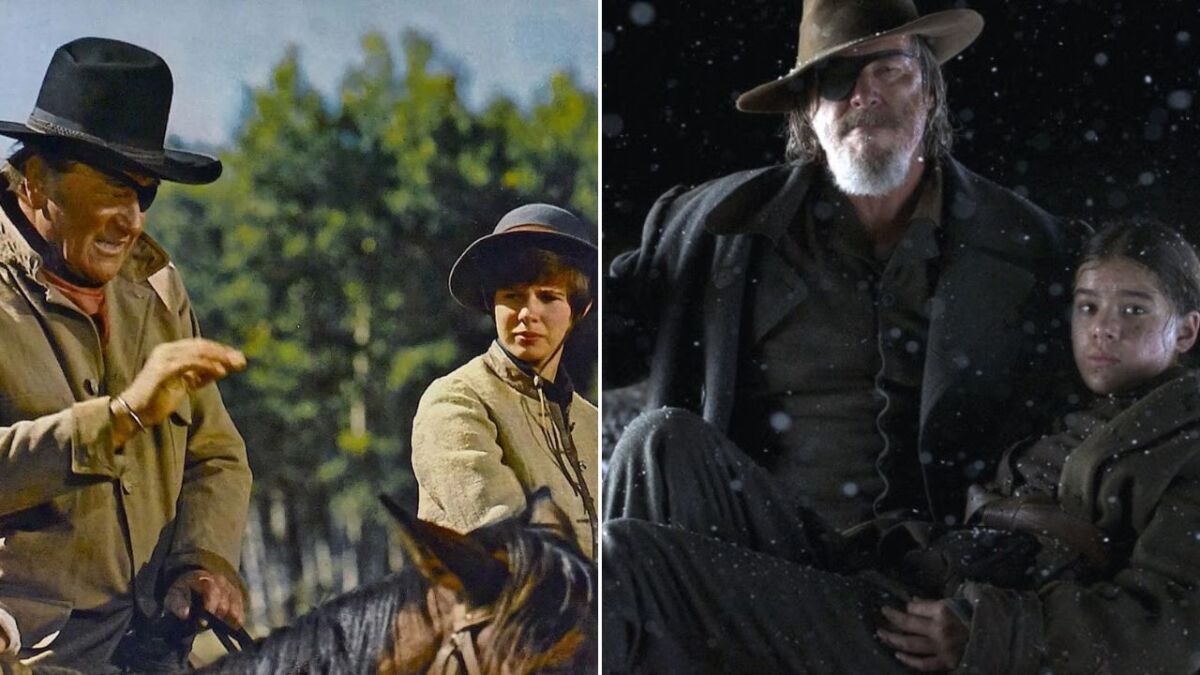We sure do love us some remakes, huh? And if you don’t love the concept or the films themselves, there’s a good chance you at least enjoy complaining about them. Remakes are often derided and held up as proof positive that Hollywood/the film industry/etc is fresh out of ideas.
There might be a sliver of truth to that opinion, but the truth is that Hollywood and other pockets of the filmmaking world have been in the remake/retelling business for almost as long as cinema itself has existed. There are literally dozens of film adaptations of Frankenstein, both before and after the iconic 1932 entry with Boris Karloff. Is every film that came after the 1910 version, believed to be the first film based on Mary Shelley’s novel, a remake? Of course not, but the term itself has become a catch-all reminding us that some people should probably read more books.
Of course, there are direct remakes of existing movies. There are also new film adaptations of an existing property that can’t help but dwell in the shadow of the movie that came before it. We’re going to try our best this month at Make the Case to focus on actual remakes, meaning movies whose existence is directly linked to another movie. Not something that could arguably be referred to as another adaptation of a novel or short story. However, we will be breaking that rule at least once as we compare some notable remakes to the originals.
1. Willard (1971 vs 2003)

Killer animal movies were big business in the 1970s, particularly at the drive-in. Willard is one of the more bizarre examples, simply because it’s less of a nature-run-amok story, and more of a somber tale centered around a misfit (Bruce Davison) with special powers. Namely the ability to connect and communicate with rats to do his bidding. Two rats in particular become the focus of the titular Willard’s attention, leading to eventual disaster for a man who simply wanted some semblance of control over his life.
Willard is bleak and somewhat mean-spirited, but it at least has a sympathetic performance from Davison. The 2003 remake, featuring Crispin Glover in the role, doesn’t seem concerned with that aspect.
Glover’s Willard is even less likable than the original, leading to a movie that feels cruel more than anything. This may be too much for some, but ultimately the 2003 remake has a more memorable performance from Glover, combined with better visuals and a memorable set design in the form of the sprawling, crumbling house Willard calls home.
The Winner: The original Willard tells a better and more nuanced story, but its 2003 remake has Crispin Glover at his sneering best, with some nasty practical effects and nightmarish scenes of his rat army. This is an example of a remake that’s better overall than its predecessor. Don’t forget to check out Glover’s cover of the song “Ben”, originally performed by Michael Jackson for the 1972 sequel to the original.
2. Psycho (1960 vs 1998)

In one corner, we have one of the greatest horror movies in history, arguably a prototype of what eventually became the slasher film. In the other corner, we have one of the most infamous remakes in movie history. Alfred Hitchcock’s celebrity became even greater in the wake of Psycho’s release and massive success. Critics and audiences then and now hail the movie as a masterwork of suspense, tension-building, acting, music, and visual strength.
Gus Van Sant, fresh from the success of 1997’s Good Will Hunting, found himself with the clout to do basically whatever he wanted.
And what he wanted to do was something many considered unthinkable. Even sacrilegious.
Is it, though?
Keeping in mind that both films are in fact based on a book, there really isn’t anything that’s sacred in the sense of someone trying the material again. What makes Van Sant’s film distinctly strange was his adherence to shooting his Psycho exactly as the original looked in every possible fashion. While you can respect his reasons for doing so, that doesn’t necessarily mean it was a good idea. Still, this is a remake that deserves a little more affection.
The Winner: The 1998 Psycho is at least compelling, featuring a memorable and impressively frightening performance by Vince Vaughn as Norman Bates, as well as good turns from William H. Macy, Julianne Moore, and the late Anne Heche in arguably the film’s most important role. It just doesn’t have anything new to say, and that’s hard to compare to a movie that features Anthony Perkins, Janet Leigh, and has the merit of achieving perfection the first time around. The original wins by a mile.
3. Wings of Desire (1987) vs City of Angels (1998)

If you want to talk about remakes that are arguably offensive to the original film, City of Angels is a good conversation starter. No, a remake doesn’t invalidate the original piece, but something as bland and goofy as City of Angels is a good example of what happens when a complex work is aggressively dumbed down for mass appeal.
Wings of Desire is a 1987 fantasy film from German filmmaker Wim Wenders (Paris, Texas, Until the End of the World). Its plot concerns the existence of angels, who wander the earth, unseen, and try to offer comfort to those who need it the most. The movie is set in Berlin, and primarily focuses on a specific angel (the great Bruno Ganz), whose experiences with humanity throughout the densely populated city compels him to give up being an angel in exchange for becoming a human. His deep love for a trapeze artist (Solveig Dommartin) eventually pushes him to make the profound choice.
A love story is very much part of the makeup of Wings of Desire. City of Angels on the other hand opts to make a love story the heart and soul of the entire film, with Nicolas Cage as the angel and Meg Ryan as the human, exciting enough to make an angel change their mind. It’s a standard late-90s romantic comedy, and a pretty insipid one at that, despite a strong supporting cast and good performances from Cage and Ryan.
City of Angels feels like toxic positivity in living, breathing form. It’s forgettable at best and obnoxious in its overall execution at worst. Watch Wings of Desire, if you haven’t, and if you really need this story to continue there’s a thoroughly decent direct sequel.
The Winner: Clearly, Wings of Desire is the winner here. Even if you have no idea City of Angels is a remake, you’re still watching one of the dumbest and least-likable movies of the decade.
4. True Grit (1969 vs 2010)

After a lifetime spent primarily in westerns, John Wayne won his only Oscar for portraying the rugged, unorthodox, and exceptionally alcoholic lawman Rooster Cogburn. It’s one of Wayne’s most enjoyable performances, to be sure, and this 1969 adaptation of a darkly humorous and eminently appealing Charles Portis novel is mostly his vehicle.
The book is in fact told from the perspective of a young girl named Mattie, whose quest to see her father’s killer hanged brings her into contact with Rooster. The movie doesn’t particularly care about this, although the excellent Kim Darby still gets plenty of screen time alongside Wayne. The 1969 True Grit is beautifully shot, keeps an excellent and suspenseful pace, and features cast members like Glen Campbell, Dennis Hopper, and Robert Duvall. The chemistry between Wayne and Darby is undeniable.
However, as adaptations go, the revisionist approach taken by Joel and Ethan Coen to their 2010 True Grit is arguably superior in every way. This film returns the focus to Mattie, played with the depth and intensity afforded in the screenplay to Hailee Steinfeld. The 2010 True Grit feels more grounded in an actual world, with Jeff Bridges’ Rooster providing the essential other half to a character as intelligent and straightforward as young Mattie (indeed, Steinfeld was an actual child at the time of filming).
2010’s True Grit captures the humor and complexities of the novel far more accurately but doesn’t lose sight of being a breathtaking cinematic experience. This is one of the best westerns of the 21st century, and it’s almost worth watching just to see Matt Damon as an arrogant and slightly absurd Texas Ranger (played by country music legend Glen Campbell in 1969).
The Winner: While there’s arguments to be made for either movie being the better of the two, I’m going to choose the 2010 True Grit by a considerable margin. The 1969 film is near-perfect, to be sure, but this 2010 reimagining of Portis’ novel is in fact fully perfect.
5. Yojimbo (1961) vs A Fistful of Dollars (1964) vs Last Man Standing (1996)

We wrap up this look at originals vs. remakes with a three-way showdown. While there have been other films that have either loosely remade this story, or simply emphasized the character Yojimbo, played by the iconic Toshiro Mifune, in some meaningful way, we’re going to focus on the original and two very direct remakes.
Yojimbo was released at the height of filmmaker Akira Kurosawa’s commercial popularity. It is arguably the most accessible film in his canon. There’s an easy-to-grasp story of a wandering samurai who decides to pit two rival gangs in a small town against one another, taking everything for himself and leaving the rest in the dust. Mifune’s Yojimbo is cheerful, cunning, and mostly on the side of doing the right thing at the end of the day. It’s straight entertainment, but the editing, overall direction, acting, sets, and music all come from some of the finest artists of the era. It’s a brilliant action film in every regard.
The 1964 spaghetti western remake, which Leone initially tried to claim wasn’t inspired by Yojimbo, is every bit as fun. In the hands of another, although very different master filmmaker, A Fistful of Dollars keeps the same basic story beats and spirit of Yojimbo. One of the most significant differences between the two comes down to Mifune’s samurai and star Clint Eastwood’s Man with No Name. Eastwood plays his gunslinger as a grim, clever figure, who nonetheless operates under a similar moral code to not harm those who don’t deserve it.
Last Man Standing, billed an official remake, might be the dourest take on this story. Set in a small, bleak town during the Great Depression, this story is one of gangsters. The key figure being Bruce Willis’ mysterious John Smith, who shows up seemingly out of nowhere, but with plans very similar to those of Yojimbo and The Man with No Name. Directed by Walter Hill, one of the greatest action directors of all time, Last Man Standing is brutal and sometimes quite impressive in its gunfight sequences.
The Winner: Last Man Standing is far better than its reputation might suggest, but it’s just not as enjoyable as Fistful of Dollars or Yojimbo. Between those two, let’s give the nod to Yojimbo, which handles its final confrontation between the antihero and the crooks with a sense of grandeur that Fistful of Dollars lacks. Both are classics, but only one is flawless from start to finish.
READ NEXT: Make the Case: 6 Movies About Bad Vacations
Some of the coverage you find on Cultured Vultures contains affiliate links, which provide us with small commissions based on purchases made from visiting our site.

